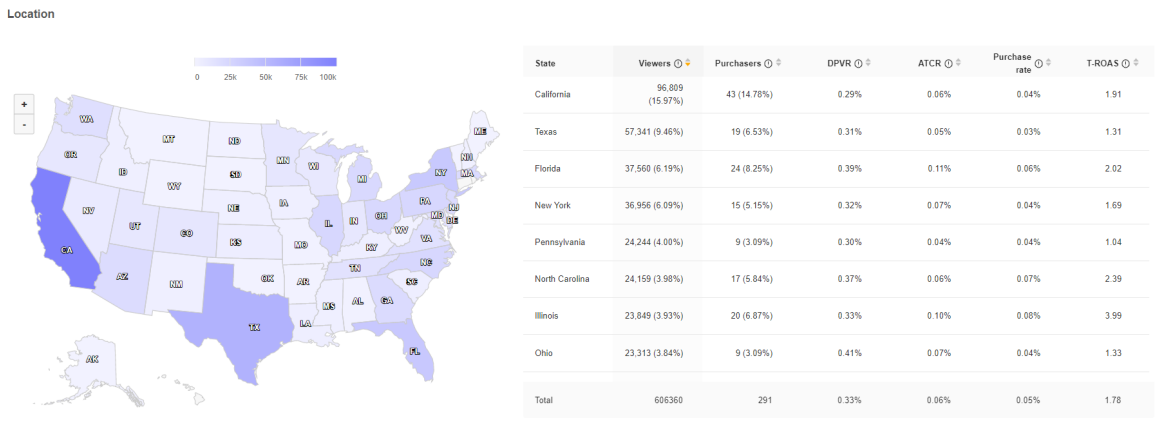Eva Tomic is a Retail Media Manager.
Sales slogs can happen to any brand. Even if you’re clocking steady revenue day in and day out on Amazon, it can feel like it’s not enough if your goal is to scale up. Soon, the doldrums settle in and you’ll find yourself looking for answers. How will you get to the next level?
To shake it off and supercharge your brand’s sales, consider adding Amazon DSP to your Amazon advertising efforts. Often overlooked and misunderstood, Amazon’s demand-side platform (DSP) is not a set-it-and-forget-it tool for programmatic ads. The key is to know how to digest and react to real-time data. Used in combination with new capabilities provided by the Amazon Marketing Cloud, and armed with knowledge and inspiration, Amazon DSP advertising can help you break through that growth ceiling.
One client of Acadia’s in the personal care category found themselves in a growth slump recently. While they were profitable and hitting their daily sales target using pay per click (PPC) advertising as its core promotional engine, months went by with the same results. They weren’t unhappy with the results, but they wanted to see growth over time.
Enter DSP
At the beginning of this year, we began working with the client to increase their sales volume. The new goal was to increase daily sales by 38% using Amazon DSP, focusing on new customer acquisition and conversion, and promoting the brand’s top-selling products on Amazon.
Adding DSP to PPC was the extra layer needed to reach the new sales goal, as PPC alone had left sales to top out at $4,000 per day. We also wanted to see how PPC and DSP interact together and work in sync. Could using both at the same time make the other strong? With DSP ads running, would PPC ads be more effective?
To understand the answer to these questions, as well as the efficacy and return on DSP ads, we looked to the reporting provided by Amazon Marketing Cloud (AMC). These painted a full picture of what was driving new customers to buy based on the DSP strategy that had been rolled out.
With AMC, we followed the customer journey to see how many customers were reached from DSP ads, which campaign ad types they were met with (e.g. Sponsored Products or Sponsored Display), and how those customer paths then converged. This meant we could go beyond last-touch attribution to understand how upper-funnel DSP campaigns were influencing sales down the line. This more sophisticated view allows us to understand the total effect of DSP on sales, going beyond the basic metric of impressions.
Since our goal was to push for conversions and acquire new customers, we looked to AMC’s audience insights state by state to see where customers were and how many were new to the brand. That bolstered the DSP strategy: by knowing where the ads were working best, we could put more money behind the ads in those locations and boost sales even further. This proved particularly valuable for seasonal items that may not be relevant everywhere at the same time. All it took was overlapping multiple types of ads, running the multichannel funnel and carefully reviewing the marketing funnel reports.

Audience Insights from Amazon Marketing Cloud showing amazon sales and advertising performance by geography.
Then we wanted to know even more about the ways the ads were working and how the customer was responding. With AMC, we tracked what time of day people were most likely to purchase products, and organized the ad distribution plan’s dayparting settings to reflect the most effective times to deploy ads. By tracking the hours of the day that our spend was most efficient, we were able to drive the highest conversion rates and ROAS.
And don’t forget the follow through: it’s not ideal to bring in new customers for one purchase, so considering the repurchase plan from the get go was key. AMC shows consideration and repurchase periods, meaning we know how long customers waited between seeing the ad and buying the product, as well as how long it took them to run out and need to purchase again. With this information, we can set up our ads to hit customers who have seen one ad, or put the item in their carts, with additional ads, as well as when to hit the repeat purchasers around the time they’d be running out and need to reorder. Structuring a specific retargeting plan around line items meant maximized performance.

The results
The payoff was clear. Combining the power of PPC with DSP, and pulling the levers of AMC to make sense of what’s working in real time, grew daily and monthly sales. Daily sales have increased 27.99 % since we initiated DSP for this brand.

The client is now expanding its DSP strategy, using key learnings from the early trial and improving on what’s proven to work. We’re creating custom DSP creatives to make the ads more interesting and will expand the product scope beyond the top sellers.
Try it now and push through the doldrums
Sales slumps are a drag. Shaking up your ad mix and strengthening your strategy with DSP can help. Once DSP is added to a brand’s arsenal, PPC ads become stronger, sales go up and new customers are reached.
With AMC to help make sense of what’s working, it only gets better, as we can track every detail and audience insight and improve the plan as we go. Amazon DSP is not new, but it’s an often overlooked growth opportunity. Don’t miss out: Learn more about next-gen DSP with Acadia.
